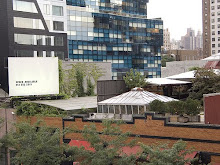


1) Explosion on
-Former site of 1970 Weather Underground Explosion, 2007 (http://newyorkdailyphoto.blogspot.com/2007/10/bomb-factory.html).
Just a few blocks from NYU and a site that we, as students, have most likely passed countless times without any suspicion holds a significant place in radical New York City history. It is at this site,
The Weather Underground formed as an aggressively militant offshoot of Students for a Democratic Society (SDS). Their creation was a reaction to the inadequacy of the New Left. Instead, they proposed a “white fighting force to support the black liberation movement,” through which they would employ “armed propaganda” and an “urban guerilla strategy,” where youth played an essential role in an armed struggle against government actions. The organization’s radicalism was evident in several episodes across the country: from the “Days of Rage” riots in
I initially chose this site because the radicalism of the organization, of which I only marginally knew about, intrigued me. The militant activism against the status quo and rampant conservatism seemed at place within a historical context of the 1960s and 70s. However, upon further investigation, the organization seemed to represent oblivious white privilege and a short sightedness of the radicalism of that era. The organization was very much white, and despite their allegiance to the Black Panther Party and Black Nationalist Movement, they embodied a white privilege, of which those other radical groups could not enjoy the luxury. Thus, through their explicit radical actions and the minor political repercussions, the Weather Underground maintained the “legitimation of expectations of power and control that enshrine the status quo as a neutral baseline, while masking the maintenance of white privilege and domination.”
It seems fitting and appropriate that the
- Josefina Peralta and Tiffany Chang
References
Wakin, Daniel J. 2003. Quieter Lives for 60's Militants, but Intensity of Beliefs Hasn't Faded. New York Times, August 24.
Weather Underground Organization. 1971. Outlaws of Amerika: Communiques from the Weather Underground.

Angry Chinese Red Movements.... even more of a laugh lol
ReplyDelete